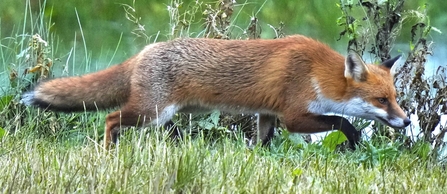November was a month filled with wildlife delights as bright crisp mornings melted into long dark nights.
Brockholes
Brockholes is a magical reserve to visit at any time of year, with wildlife sightings that fill us with both awe and delight.
With the colder months come swathes of starlings that fill our skies with their hypnotic murmurations, pulsating and shapeshifting in the final few hours of light.
We look forward to murmurations every year at Brockholes but in some unexpected wildlife news, a kittiwake was also spotted at the reserve in November. These red-listed gulls are most commonly found on clifftops and rock ledges around the coast, only turning up inland on odd occasions.
Last month, another surprise came in the form of a rather special encounter with one of our more elusive creatures, the stoat. Closely related to weasels and otters, stoats have creamy white bellies and black-tipped tails. Tony's stunning photos of this playful character enjoying the winter sunshine at Brockholes bought a smile to so many faces this month.





